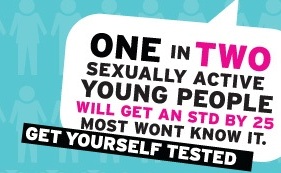Abstract
Sexually transmitted diseases (STDs) affect many people in different parts of the world. Many youths are currently engaging in unsafe sexual practices. New infections are being recorded every day. A powerful campaign will encourage more youths to change their behaviors. This essay presents effective messages that can deal with the challenges associated with different STDs.
Introduction
Studies show that new STD infections are recorded every day. Such sexually transmitted diseases (STDs) affect more youths in different societies. Such diseases cause many health problems and deaths. Such STDs are also “becoming resistant to different drugs” (Samkange-Zeeb, Spallek, & Zeeb, 2011, p. 12). Many people have encountered numerous health problems due to such diseases. Every society must identify new campaigns in order to deal with these diseases. According to (Chinsembu, 2009, p. 112), “many sexually transmitted viruses (STVs) are hard to cure”. The proposed campaign will deliver the right messages to the targeted individuals. Such messages will eventually deal with this problem.
The Proposed Campaign
Type of Appeal and Targeted Audience
A rational appeal has the potential to deliver the right messages to various individuals. This kind of appeal ensures that the targeted message is practical, functional, and reasonable. The approach will ensure more individuals understand the challenges associated with different sexually transmitted diseases. This campaign will target the youth. Members of this group also engage in risky health practices (Roper, 2013). Proper messages will ensure such young individuals understand the dangers associated with every STD. The strategy will reduce the number of new STD infections.
Campaign Messages
Three messages will be used throughout the campaign period. Such messages will ensure every person understands the facts associated with different STDs. The targeted messages are as follows:
- STDs such as gonorrhea, syphilis, and herpes have negative consequences that can affect a person’s future.
- Every youth should “get tested for different STDs” (Tyden, 2011, p. 73).
- The youths should abstain and use condoms in order to deal with these sexually transmitted diseases.
Desired Behavior Change
These above three messages will ensure the proposed campaign becomes successful. The targeted youths will also understand the dangers associated with various STDs. The individuals will also embrace new practices that can support their health goals (Maibach, Abroms, & Marosits, 2007). For instance, the individuals will get tested for different STDs. This practice will encourage them to embrace positive practices. The campaign will also ensure more youths do not engage in inappropriate sexual behaviors. The targeted youths will use condoms or abstain from sex. These positive behaviors will eventually produce positive outcomes in every community.

Benefits of the Proposed Campaign
This campaign will produce many benefits. To begin with, the campaign will ensure every targeted youth focuses on his or her goals. Such campaigns will also empower more individuals in different societies. The government will not incur more expenses in an attempt to treat such diseases. More youths will “no longer be hindered by the complexities associated with different STDs” (Tyden, 2011, p. 73). A “positive behavior change will ensure every infected individual gets the right medical support” (Resnick & Siegel, 2013, p. 36).
Conclusion
The proposed campaign can produce positive results. This campaign will also ensure more people engage in different economic activities (Parker & Thorson, 2009). The strategy will eventually support more families and communities. In conclusion, every community should embrace the above messages in order to deal with these STDs.
Reference List
Chinsembu, K. (2009). Sexually Transmitted Infections in Adolescents. The Open Infectious Diseases Journal, 3(1), 107-117.
Maibach, E., Abroms, C., & Marosits, M. (2007). Communication and marketing as tools to cultivate the public’s health: a proposed “people and places” framework. BMC Public Health, 7(88), 1-15.
Parker, C., & Thorson, E. (2009). Health communication in the new media landscape. New York, NY: Springer Publishing Company.
Resnick, A., & Siegel, M. (2013). Marketing public health: Strategies to promote social change. Burlington, MA: Jones and Bartlett Learning.
Roper, L. (2013). Commentary: Condoms and HIV/STD prevention–clarifying the message. American Journal of Public Health, 83(4), 501-503.
Samkange-Zeeb, F., Spallek, L., & Zeeb, J. (2011). Awareness and knowledge of sexually transmitted diseases (STDs) among school-going adolescents in Europe: a systematic review of published literature. BMC Public Health, 11(2), 7-27.
Tyden, T. (2011). Evaluation of an STD-prevention program for Swedish university students. Journal of American College Health, 47(2), 70-75.